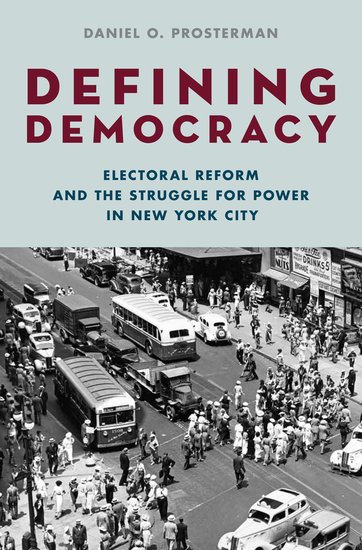I’ve been working behind the scenes on my guide to the Queensland election, but I’ve also been taking the opportunity of this quiet election period to do some reading, including on some topics related to electoral analysis. I thought I would put together some blog posts summarising these books and journal articles.
First up, I just finished reading Defining Democracy by Daniel Prosterman. This book covers the history of New York City’s brief use of the Single Transferable Vote proportional representation system to elect its city council in the 1930s and 1940s.
The introduction of STV was part of a process of reform that took place in the 1930s primarily as a reaction to the domination of the local political machines, in particular Tammany Hall, which had dominated the old Board of Aldermen. Fiorello La Guardia had been elected mayor at the head of an anti-Tammany fusion ticket, but faced a Democratic supermajority on the Board. A charter commission appointed by the state government put together a series of reform proposals, which included replacing the Board with a smaller Council, as well as a new electoral system. The charter was put to referendum, with STV offered on a separate ballot. Both passed in 1936, to be implemented at the 1937 election.
The change was part of a movement in numerous US cities to switch to using proportional voting, which saw numerous cities consider the option. The book discusses various reform campaigns which were often stymied by state governments or state courts which ruled that proportional voting systems breached state constitutions. But not in New York.
The system was similar to other STV ballots used in places like Tasmania, Ireland and across Australia’s upper houses. The number of seats on the council was not fixed, but rather varied depending on turnout, ranging from 17 to 26. Each borough received one seat for every 75,000 votes cast: an innovative solution to longstanding grievances from the outer boroughs over Manhattan overrepresentation. Each borough formed a single electorate, which meant that candidate lists tended to be quite long.
The first election took a very long time to count, in part a reflection of the large ballot sizes and unfamiliarity with the system, but some of the specifics of the counting system, in terms of which ballots were transferred and at what point in the count, appeared to have slowed the process down.
That first election also produced a far more diverse council. The Democratic Party held on to 13 out of 26 seats, down from 62 out of 65 seats on the old Board of Aldermen. Five members of the left-wing American Labor Party were elected, along with others broadly supportive of La Guardia and opposed to the Democrats.
The Democrats just managed to hold on to half the seats, but managed to cement their position as the majority, and they won majorities on every subsequent PR council – although much smaller majorities than under the first-past-the-post single-member systems used before and after PR.
There was a strong effort throughout the next decade to discredit and dismantle the voting system. Originally this mostly came from those supportive of the Democratic machine, but other groups gradually flipped. One of the main causes of this loss of support was the election of two Communists to the council. The first was elected in 1941 and he was joined by a comrade in 1943. Both were re-elected at the last PR election in 1945, when the council term was extended to four years.
A combination of the election of Communists, the complexity of the system and the election of minor party candidates (which particularly bothered Republicans, despite Republicans gaining more seats as a proportion of the total than they had on the old Board) led to most of the city’s newspapers supporting repeal, along with the two major party machines.
After two previous referendums which would have effectively repealed PR in New York City failed in 1938 and 1940, the 1947 referendum succeeded in replacing PR with a single-member system, which restored the Democrats to their supermajority at the 1949 election.
The story also intertwines with the domestic politics of the Second World War, and touches on how the campaigners advocating for proportional representation in the US and the United Kingdom pivoted to pushing for PR to be used to elect the new democratic institutions put in place in defeated Germany and Japan. The book concludes that while PR advocates were losing their fights in American cities, PR (if not the same exact system) was advancing elsewhere in the world.
The book was a bit hard to find but if you are really interested in the history of electoral system reform it’s a fascinating story.




Yes the major parties’ attitude to PR is often like that. They’ll put up with having almost no members in an assembly and the other side having dictator-like control in the hope that one day the situation will be reversed and they’ll be the dictators. Good governance be buggered – absolute power is what it’s all about for them!
Ben
Most interesting. It seems to be taking a long time for ANU Press to get Morrison’s Miracle onto book-shop shelves.
AJ They are still hoping it was all a bad dream, & they will wake up soon ……!
cheers WD
Comments are closed.